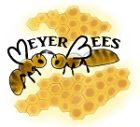Beekeeping is a rewarding practice that benefits both the environment and the beekeeper. Whether you are a beginner or an experienced apiarist, having the right beekeeping equipment is essential for managing a successful apiary. From hive components to protective gear, each piece plays a significant role in ensuring your bee colony’s health and productivity.
Hive Components: The Foundation of Beekeeping
The hive is the heart of any apiary, serving as a home for the bee colony. Standard hive setups include key components such as:
Hive Bodies and Supers – These are the wooden boxes where bees build their comb and store honey.
Frames and Foundation – Frames hold the beeswax foundation, providing structure for bees to build their comb.
Inner and Outer Covers – These protect the hive from external elements and help regulate temperature inside the colony.
Using high-quality hive components ensures durability and provides a stable environment for bees to thrive. To explore various hive setup options, visit this resource.
Protective Gear: Safety First in Beekeeping
Beekeepers must safeguard themselves while handling bees. Protective clothing minimizes the risk of stings and makes hive management more comfortable. Essential protective gear includes:
Bee Suit or Jacket – A full-body bee suit or a protective jacket shields against stings.
Gloves – Leather or ventilated gloves protect hands while maintaining dexterity.
Veil and Helmet – A veil with a secure helmet keeps bees away from the face and neck.
Investing in quality protective gear ensures a safer and more enjoyable beekeeping experience.
Hive Tools and Equipment: Making Beekeeping Efficient
Proper hive tools and equipment simplify daily apiary tasks. Some of the most important tools include:
Hive Tool – A must-have for prying apart frames and cleaning hive parts.
Smoker – Produces cool smoke to calm bees, making inspections easier.
Bee Brush – Gently removes bees from frames without harming them.
Having the right tools helps manage hives effectively and ensures smooth operation in the apiary.
Feeding and Extraction Equipment
Beekeepers sometimes need to supplement the colony’s diet, especially in colder months. Feeding equipment such as hive-top feeders or entrance feeders provide bees with the necessary nutrients. Additionally, honey extraction equipment like extractors and strainers help harvest honey without damaging the comb.
Conclusion
Successful beekeeping requires the right beekeeping equipment to maintain a healthy and productive hive. From essential hive components to protective gear and specialized tools, each item contributes to efficient apiary management. For premium-quality beekeeping equipment, check out this comprehensive guide. Investing in high-quality gear ensures longevity, enhances efficiency, and helps sustain a thriving bee colony.
